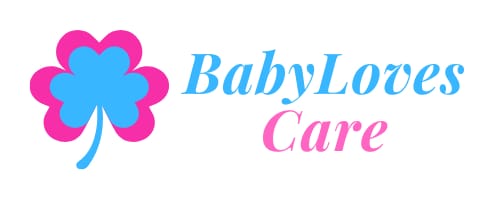Welcoming a new baby into your home is a joyous occasion filled with countless new responsibilities, one of which is mastering effective baby bathing techniques. Ensuring your baby is clean and comfortable is essential, but can be challenging for first-time parents. This guide aims to simplify the process by offering a step-by-step approach to reliable and safe baby bathing techniques. Our aim is to assuage your concerns and boost your confidence as you undertake this vital task.
Effective and Safe Baby Bathing Techniques for New Parents
Bathing your baby is a wonderful opportunity to strengthen your bond with them. Engaging your little one in conversation, singing songs, or playing during bath time not only makes the experience enjoyable, but also contributes to their language development. To safeguard their delicate skin from rashes and irritation, it’s recommended to bathe your baby three to four times a week using gentle soap.
You Will Need
To ensure a safe and enjoyable bath time for your baby, there are several items you will need:
- Water that’s warmed to a suitable temperature
- Baby shampoo designed for delicate skin
- A comb and hairbrush specifically for babies
- Dry towels to wrap your baby after the bath
- A damp washcloth for gentle cleaning
- A clean shirt, gown, or sleeper for your baby to wear post-bath
- A fresh diaper
- A comforting baby blanket for snuggling after bath
- A scent-free, alcohol-free soap to protect your baby’s skin
Safety
While bathing your baby, it’s critical to prioritize their safety to ensure a pleasant experience. Here are a few safety rules to adhere to:
- Ensure the room is warm enough to prevent your baby from getting cold.
- Bathe your baby efficiently to avoid prolonged exposure to water which could lead to chilling.
- Maintain the bath water temperature around 100° Fahrenheit (F) or 37.8° Celsius (C).
- Use a bath thermometer, your elbow, or wrist to test the water temperature. It should feel warm, not hot.
- Set your water heaters to 120°F (48.9°C) to prevent potential burns.
- Always keep one hand on your baby when they are in the bath.
- Never leave your baby unattended in any amount of water, even for a moment.
Types of Baths
For the first one to two weeks following birth, be sure to give your baby sponge baths, as their umbilical cord is still attached and healing. You can comfortably and safely perform this bathing technique on a variety of surfaces such as a towel, blanket, changing table, or even a custom-made bath pad. A simple bath pad can be created by placing a clean towel atop a folded blanket. Upon the falling off of the umbilical cord or the healing of a circumcision, you can transition to bathing the baby in a sink or in a designated baby tub. However, avoid the use of bath chairs as they can pose serious risks of injury or even mortal danger to your little one.
Bathing Your Baby: Step-by-Step Process
Here’s a step-by-step process to bathing your baby safely and effectively:
- Fill the sink or baby tub with no more than 3 inches of warm water.
- Test the water temperature to ensure it’s comfortable for your baby.
- Undress your baby, setting aside a clean set of clothes, and a fresh diaper.
- For a sponge bath, place your baby on a clean, comfortable pad.
- Gently cleanse your baby’s eyelids with a clean, damp washcloth, starting from the inner corner and moving towards the ears.
- Wash your baby’s face with water only, avoiding the use of soap.
- Use clean water to clean the outer part of their ear, refraining from using cotton swabs inside their ears.
- Wet your baby’s head with water. Apply a mild soap or shampoo on the washcloth and gently rub it over their head.
- Rinse their head with clean water and pat dry gently with a towel.
- While your baby is on the pad or in the basin, lift their back and head up gently with one arm.
- Lather a soapy washcloth or your hands and gently clean your baby’s entire body, starting at the neck.
- Pay special attention to cleaning between fingers, toes, and skin folds.
- Use the soapy washcloth or your hands to clean the diaper area, moving from front to back.
- If your baby is not circumcised, avoid pulling back the foreskin to clean the penis.
- Rinse the soap off your baby with a clean, wet washcloth.
After the Bath
Here are the steps to follow after bathing your baby:
- Start by patting your baby dry gently with a clean towel.
- Optional: Apply lotion to your baby’s body, avoiding the face.
- Comb your baby’s hair with a baby-specific comb.
- Clean your baby’s fingernails and toenails.
- When necessary, carefully trim the nails using baby-safe scissors or clippers.
Cradle Cap Care
Your baby’s scalp may occasionally appear dry or scaly, a common condition known as cradle cap. Here are some steps to help alleviate cradle cap:
- After shampooing your baby’s hair, apply a small quantity of baby oil.
- Leave the oil on the hair until the following day.
- On the next day, gently brush your baby’s hair and scalp to remove the old skin.
- Following the brushing, shampoo your baby’s hair again.
- After the process, ensure to wash the brush and comb with soapy water.
- Rinse the brush and comb, then allow them to dry.
Conclusion
In conclusion, mastering baby bathing techniques is essential for every new parent. It not only ensures your baby’s cleanliness and comfort but also provides a sweet bonding opportunity. As you confidently embrace these baby bathing techniques, remember to always prioritize safety and use products suitable for your baby’s delicate skin. Be patient, as every bath time is a learning experience for both you and your baby, gradually turning this routine into a cherished activity.




